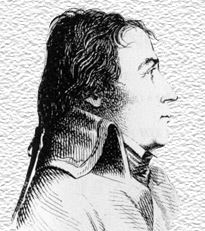 | ||
Born 6 March 1761Castelnaudary ( 1761-03-06 ) Allegiance Kingdom of France Kingdom of the French French First Republic First French Empire Bourbon Restoration (France) Battles/wars Dutch Civil War;French Revolutionary WarsBattle of the Bridge of ArcoleSiege of Mantua;Napoleonic Wars Name Antoine-Francois Andreossy | ||
Comte Antoine-François Andréossy (6 March 1761 – 10 September 1828) was a Franco-Italian nobleman, who served as a French Army artillery general, diplomat and parliamentarian.
Contents
Biography
Born at Castelnaudary in Aude, scion of an ancient Italian minor noble family from Lucca, he was a great-grandson of the celebrated civil engineer and architect of the Canal du Midi, François Andréossy (1633-1688).

An outstanding officer cadet at the Metz School of Artillery, Andréossy was commissioned in the Régiment Royal-Artillerie in 1781, seeing action in the Dutch Civil War (1787); he was promoted as Captain in 1788.
On the outbreak of the Revolution he adopted its principles. At the start of the Revolutionary Wars he saw active service on the Rhine in 1794 and in Italy in 1795, and in the campaign of 1796–1797 under Napoleon Bonaparte on engineer duties, commanding the bridging train of the French Army of Italy after June 1796, and fought with distinction at the Battle of the Bridge of Arcole and the Siege of Mantua..
He was promoted to brigadier general in 1798, in which year he accompanied Bonaparte to Egypt. He served in the Egyptian Campaign with distinction—he commanded the French flotilla on the Nile, before serving as Marshal Louis-Alexandre Berthier's aide-de-camp in Syria—and was selected as one of Napoleon's companions on his return to Europe.
Andréossy took part in the coup d'état of the 18 Brumaire, and on 6 January 1800 was made general of Général de division. Of particular importance was his term of office as ambassador to Great Britain during the short peace which followed the treaties of Amiens and Lunéville. It had been shown (Coquille, Napoleon and England, 1904) that Andréossy repeatedly warned Napoleon that the British government desired to maintain peace but must be treated with consideration. His advice, however, was disregarded. When Napoleon became emperor he made Andréossy inspector-general of artillery, a Chevalier de l'Empire (1803) and on 24 February 1809, Count of the First French Empire.
In the war of 1805 Andréossy was employed on the headquarters staff of Napoleon. From 1808 to 1809 he was French ambassador at Vienna, where he displayed a hostility to Austria which was in marked contrast to his friendliness to England in 1802-1803. In the war of 1809, Andréossy was military governor of Vienna during the French occupation. In 1812 he was sent by Napoleon as ambassador to Ambassador to The Porte in Constantinople, where he carried on the policy initiated by Sébastiani. In 1814 he was recalled by Louis XVIII. Andréossy then retired into private life, until the escape of Napoleon from Elba once again called him forth. He accepted the office of head of the War Department. After the defeat at Waterloo and the abdication of Napoleon, he was one of the five commissioners sent to negotiate with the Coalition powers, on which occasion he gave his consent to the recall of Louis XVIII.
Andréossy held high administrative office under the Bourbon Restoration, including Chief of General Staff and Councillor of State. He was awarded honorary fellowship of the Académie des Sciences Morales et Politiques in 1826, He was later elected to the Chamber of Deputies in 1827, representing Aude as Deputy until his death in 1828. His name is inscribed in his memory under the Arc de Triomphe.
Works
Andréossy's numerous works included the following:
Andréossy also wrote scientific memoirs on the mouth of the Black Sea (1818-1819); on certain Egyptian lakes (during his stay in Egypt); and in particular the history of the Languedoc Canal (Histoire du canal du Midi, 2nd ed., Paris, 1804), the chief credit of which he claimed for his ancestor. Andréossy died at Montauban in 1828.
Family
On 15 September 1810, Andréossy married Marie-Florimonde-Stéphanie de Faÿ, daughter of Charles, marquis de La Tour-Maubourg. Their only son, Étienne-Auguste (1811-1835), succeeded as the 2nd Count Andréossy in 1828 and was also a promising French Army officer but died unmarried in a riding accident, when the title became extinct; the Dowager Countess Stéphanie died on 21 February 1868 in Haute-Garonne.
